Crack the code of the biblical candlestick's profound symbolism for a deeper understanding of ancient narratives.
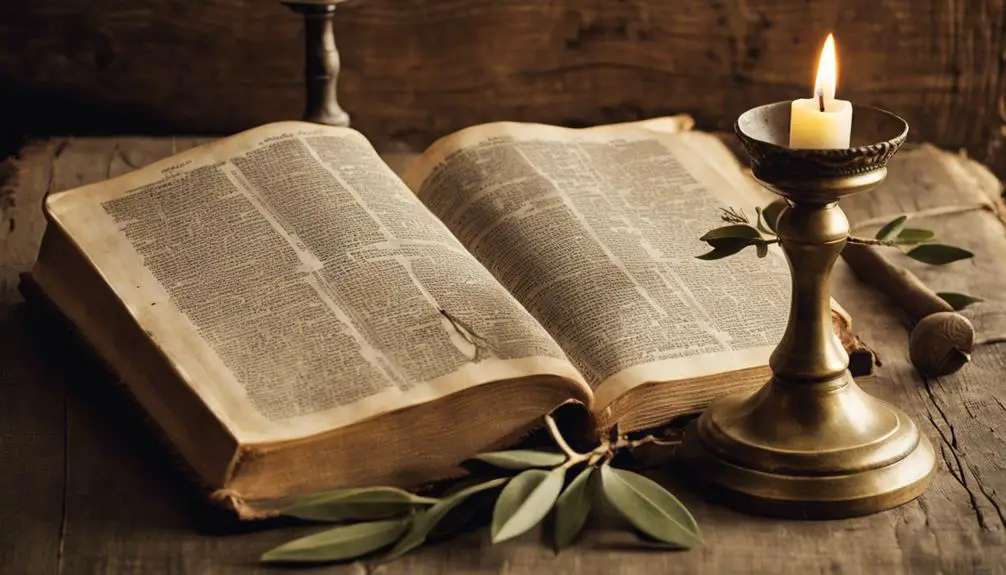
Candlestick in the Bible
Just by chance, have you ever considered the significance of the candlestick mentioned numerous times throughout the Bible?
It's not just a casual object; it carries profound symbolism that's woven into many narratives.
In fact, you'd be amazed how deep the rabbit hole of interpretations goes. Let's explore together, shall we?
Key Takeaways
- Candlesticks in the Bible symbolize divine guidance, wisdom, the church, and the Holy Spirit's provision.
- They hold a significant role in temple worship, embodying God's presence and perpetual devotion.
- Parables involving candlesticks emphasize spiritual readiness and guidance towards righteousness.
- In modern times, candlesticks maintain their biblical significance, guiding believers and symbolizing spiritual illumination.
Biblical References to Candlesticks
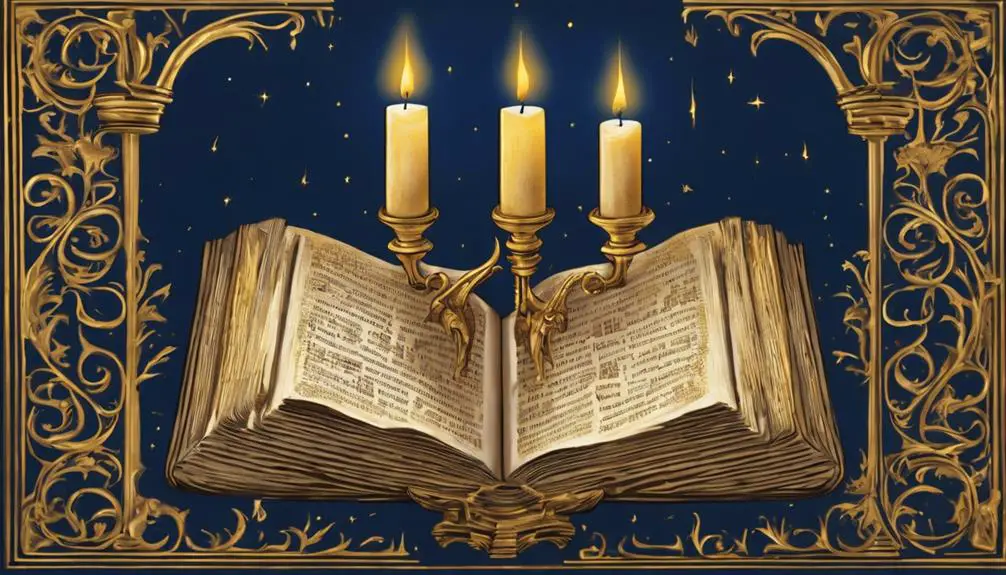
In your exploration of the Bible, you'll find that candlesticks, or 'menorahs' as they're traditionally termed, play a significant role in both the Old and New Testaments, providing a rich symbol of God's divine illumination. The historical origins of these candlesticks can be traced back to Moses' time, as detailed in the book of Exodus.
Candlestick craftsmanship, as described in the Scriptures, was a meticulous process. God gave explicit instructions for the creation of the seven-branched menorah, which was to be made of pure gold. The design was divinely inspired, reflecting a precision and beauty that could only come from the Creator Himself.
In the New Testament, candlesticks take on a somewhat different but equally important role. In the book of Revelation, for instance, seven golden candlesticks represent the seven churches to whom John wrote. Each candlestick, therefore, serves as a metaphorical embodiment of a community of believers, illuminating the world with the truth of God's Word.
Symbolism of Candlesticks in Scriptures
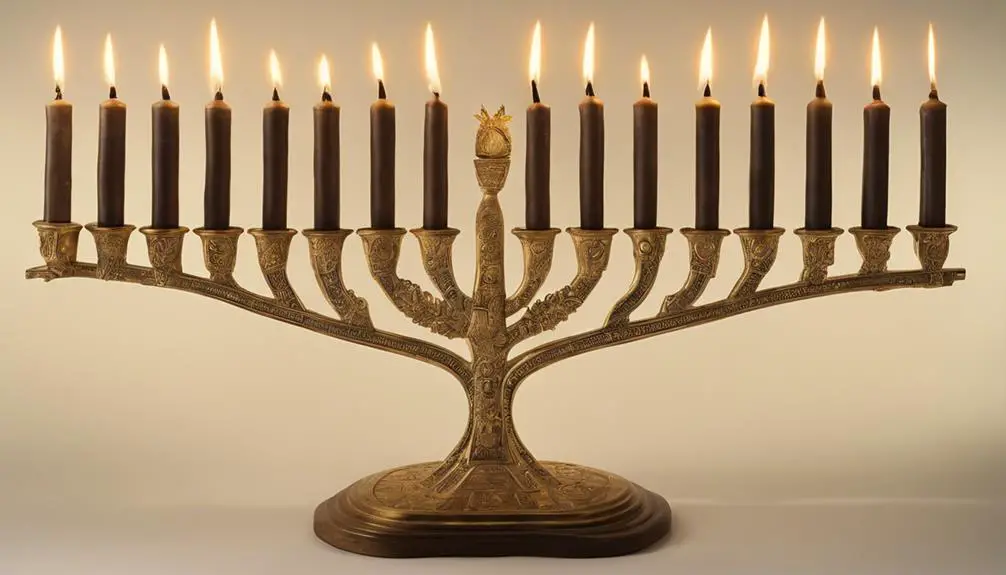
Delving deeper into the symbolism of candlesticks in Scriptures, you'll find they're more than just physical objects; they embody profound spiritual truths and theological insights. As you peel back the layers of Biblical illumination, the candlestick's symbolism becomes apparent.
In the realm of Candlestick Prophecies, they're often associated with divine guidance and wisdom. Just as a candlestick gives light to a dark room, God's word illuminates the path for His followers. The candlestick, therefore, serves as a metaphor for the divine illumination that God's word provides.
Moreover, the candlestick also symbolizes the church and its role in the world. In the book of Revelation, John's vision of seven golden candlesticks represents the seven churches, illuminating the spiritual landscape.
Lastly, the oil that fuels the candle's flame is equally symbolic, often representing the Holy Spirit's continuous provision for our spiritual needs.
The Candlestick in Temple Worship
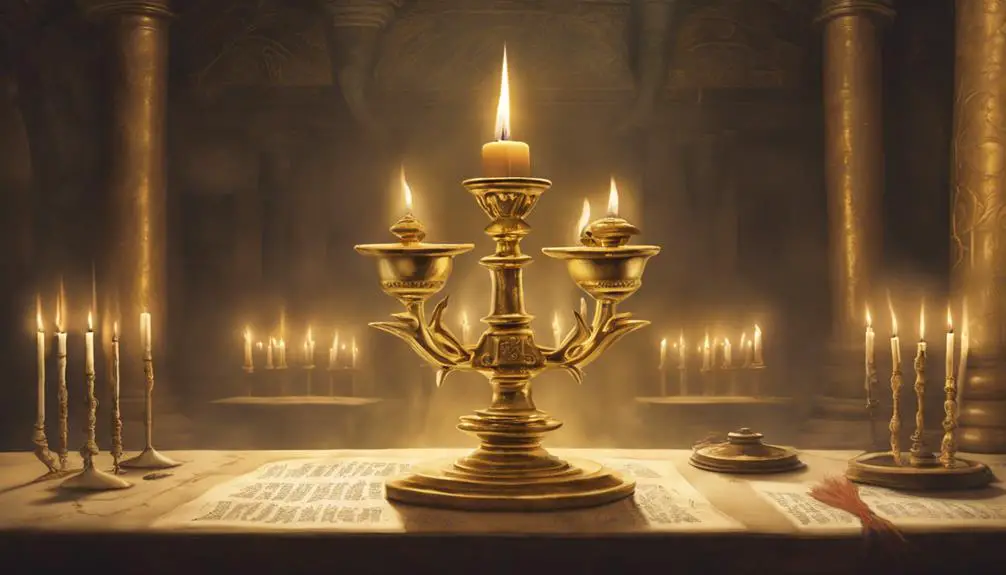
You'll find that the candlestick's role extends significantly into temple worship, shedding light both literally and metaphorically on the rituals performed therein. Its presence, while functional, also contributes heavily to temple aesthetics. As you delve deeper, you'll discover the intricate relationship between the candlestick and worship rituals.
The candlestick's representation in temple worship can be broken down as follows:
Element |
Symbolism |
Biblical Reference |
|---|---|---|
Light |
God's presence |
Exodus 25:37 |
Seven Lamps |
Seven Spirits of God |
Revelation 4:5 |
Pure Gold Material |
Purity, Divinity |
Exodus 25:31 |
Almond Blossoms Design |
Watchfulness, Promise |
Exodus 25:33-34 |
Continual Burning |
Perpetual worship |
Leviticus 24:2-4 |
Each aspect of the candlestick, from its design to the light it emits, was not just for visual appeal, but carried with it a deeper, spiritual meaning. It was a constant reminder to those in the temple of God's ever-present light and spirit. Its continual burning served as an emblem of the perpetual worship that is due to God, reinforcing the importance of maintaining a constant connection with the divine.
Interpretations of Candlestick Parables
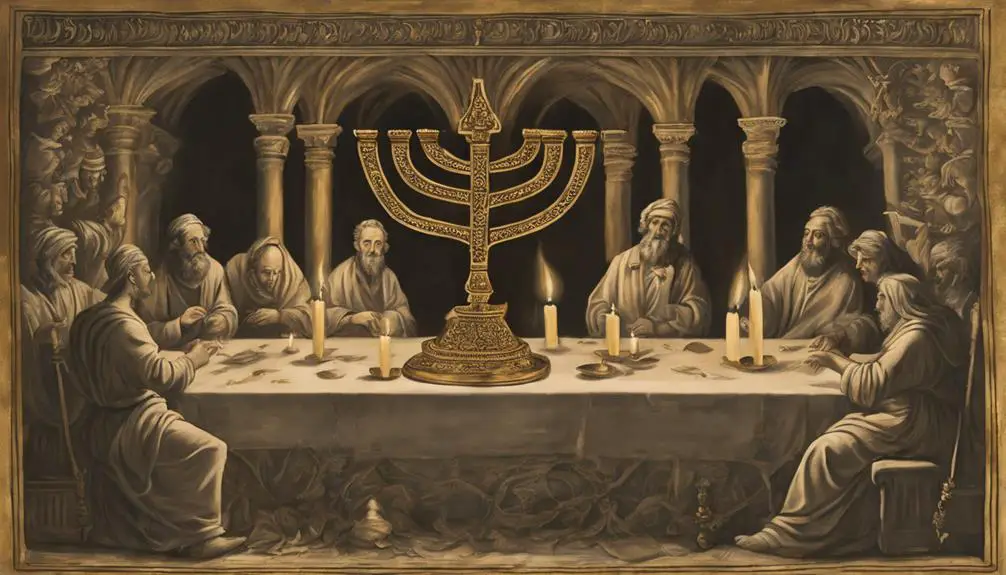
Moving beyond the physical symbolism within the temple, let's explore the theological interpretations found in the biblical parables involving the candlestick. This exploration will take us into a deeper understanding of the Candlestick Prophecies and the Parable Analysis.
When you examine these parables, you'll find that the candlestick often symbolizes the presence of God and His divine illumination. It's a beacon of spiritual enlightenment, guiding the faithful on their journey. In the Parable of the Ten Virgins, for instance, the burning oil lamps (akin to candlesticks) held by the wise virgins signify readiness and vigilance for the return of the Bridegroom — Christ Jesus.
Moreover, the Candlestick Prophecies, especially those in the Book of Zechariah, depict the candlestick as a symbol of God's word, illuminating the path to righteousness. It's not just a physical entity, but a representation of spiritual light and truth.
However, the interpretation of these candlestick parables isn't uniform. Different biblical scholars offer varying perspectives based on cultural contexts, historical settings, and theological viewpoints. As you delve into these interpretations, you'll uncover the rich complexity and profound spiritual insights embedded in these stories. So, let's keep our minds open to these diverse interpretations, illuminating our understanding just as the candlestick lights up the darkness.
Modern Usage and Significance of Biblical Candlesticks
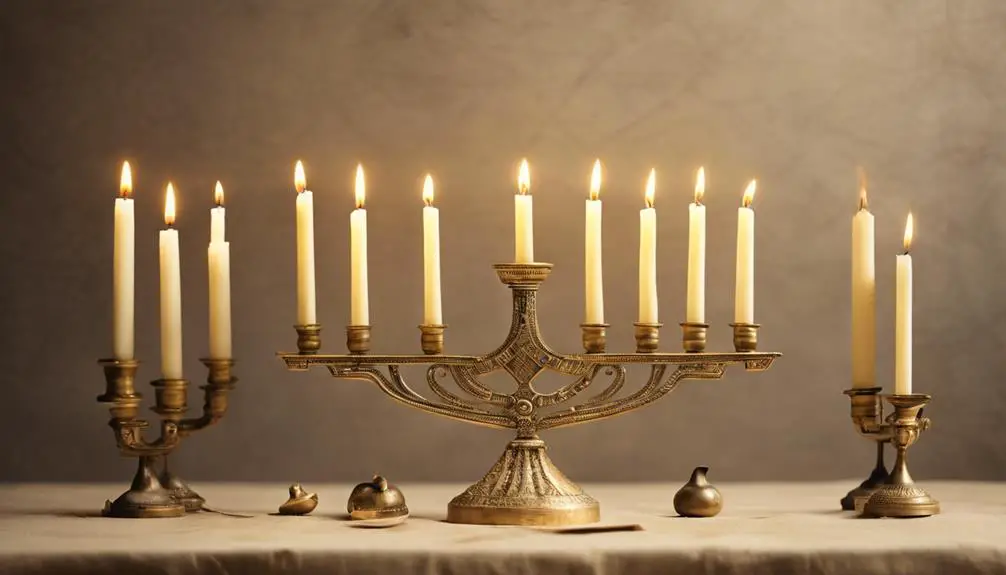
In today's world, the symbolic importance of biblical candlesticks remains prominent, guiding believers on their spiritual journey and illuminating theological principles in contemporary settings. You'll find that these candlesticks, steeped in the rich traditions of Candlestick Craftsmanship and Biblical Metallurgy, continue to shed light on the divine.
The artistry of these ancient items, handcrafted from precious metals, is now replicated and cherished in modern churches, homes, and religious gatherings. They serve as a tangible link to ancient scripture and a visible manifestation of spiritual illumination.
In terms of Biblical Metallurgy, the materials and processes used in creating these candlesticks hold deep symbolic value. Gold, for instance, signifies divine purity, while the painstaking process of refining and shaping the metal mirrors a believer's spiritual refinement.
You may also notice the intricate designs carved into these candlesticks. Such is the mastery of Candlestick Craftsmanship, where every swirl, every etch, is a testament to the beauty of faith. They invite reflection on the complexity and depth of God's wisdom.
Frequently Asked Questions
What Materials Were Traditionally Used to Make Candlesticks Mentioned in the Bible?
In terms of materials used traditionally, you'll find that gold was the primary material for crafting items of symbolic importance such as candlesticks. In the Bible, the candlestick symbolizes God's word giving light to the believers.
The crafting techniques involved precision and artistry, demonstrating the significant value and respect these objects held. It's fascinating to delve into these historical techniques and the rich symbolism they carried.
Are There Specific Biblical Figures Who Are Often Associated With Candlesticks?
Yes, there are biblical figures often associated with candlesticks. Notably, Zechariah and John the Apostle are linked with candlestick symbolism. Zechariah saw a vision of a golden candlestick, and John described seven golden candlesticks in Revelation, representing seven churches.
These biblical metaphors suggest spiritual illumination, divine presence, and the church's role in sharing God's light. So, you'll often find these figures tied to candlestick imagery in biblical interpretation.
What Is the Historical Evolution of the Candlestick's Design From Biblical Times?
You're delving into the historical evolution of candlestick design, aren't you? From basic clay creations, they've transformed considerably.
Candlestick symbolism is deeply ingrained in many cultures, with biblical references playing a significant role.
Over centuries, their design has evolved from simple holders to intricate metalwork, reflecting religious, cultural, and artistic changes.
It's fascinating to see how something so mundane can embody such profound historical and theological shifts.
Are There Specific Prayers or Rituals Associated With Lighting These Biblical Candlesticks?
Yes, there are specific rituals tied to lighting these symbols. In your prayer, you'd typically invoke biblical references, acknowledging the candlestick's symbolism as a light guiding your path.
It's not just about the act of lighting, but the spiritual implications behind it. You're connecting to historical traditions, creating a personal, intimate dialogue with God.
Each light represents a prayer, a hope, or a thanksgiving, making the act deeply significant.
How Have Different Christian Denominations Interpreted the Use and Significance of Candlesticks Differently?
Well, you'll find that different Christian denominations interpret candlestick symbolism and their liturgical practices quite differently.
For Catholics, candlesticks often represent Jesus as the light of the world.
Protestants, on the other hand, might see them more as symbolic reminders of the Holy Spirit's presence.
Meanwhile, Orthodox Christianity emphasizes candlesticks in rituals, symbolizing the divine light of Christ.
It's a fascinating study of diverse interpretations.
Conclusion
In understanding biblical references, you've seen that candlesticks aren't mere objects of light. They're symbolic, representing the divine presence, spiritual illumination, and temple worship.
You've interpreted parables, uncovering layers of spiritual truths. Today, they continue to hold profound significance in religious rituals.
So, when you next encounter a candlestick in a religious context, remember its rich biblical symbolism and consider the deeper message it carries.



Sign up